William Harrison Folsom was an architect and contractor. He constructed many of the historic buildings in Utah, particularly in Salt Lake City. Folsom is probably best known as a Latter-day Saint ("Mormon") architect. Many of his most prominent works were commissioned by The Church of Jesus Christ of Latter-day Saints. For a time he was sustained as the Church Architect, a calling in the church.

The Conference Center, in Salt Lake City, Utah, is the premier meeting hall for The Church of Jesus Christ of Latter-day Saints. Completed in 2000, the 21,000-seat Conference Center replaced the traditional use of the nearby Salt Lake Tabernacle, built in 1868, for semi-annual LDS Church General Conference and major church gatherings, devotionals, and other events. It is believed to be the largest theater-style auditorium ever built.
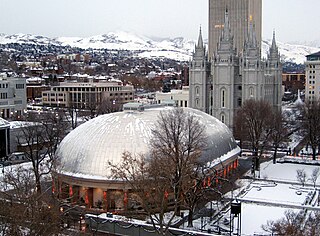
The Salt Lake Tabernacle, also known as the Mormon Tabernacle, is located on Temple Square in Salt Lake City, in the U.S. state of Utah. The Tabernacle was built from 1864 to 1867 to house meetings for The Church of Jesus Christ of Latter-day Saints, and was the location of the church's semi-annual general conference for 132 years. However, because of the growth in the number of conference attendees, general conference was moved to the new and larger LDS Conference Center in 2000. In the October 1999 General Conference, church president Gordon B. Hinckley gave a talk honoring the Tabernacle and introducing the new Conference Center. Now a historic building on Temple Square, the Salt Lake Tabernacle is still used for overflow crowds during general conference.

Orson Cornelius Spencer was a prolific writer and prominent member of The Church of Jesus Christ of Latter-day Saints. He served in several highly visible positions within the church and left an extensive legacy of theological writings. Orson Spencer is one of the examples William Mulder cites of highly educated people becoming Mormons during the time of Joseph Smith

Andrew Jenson, born Anders Jensen, was a Danish immigrant to the United States who acted as an Assistant Church Historian of The Church of Jesus Christ of Latter-day Saints for much of the early-20th century. Jenson also served the church as president of the Scandinavian Mission.

Alexander Ferdinand Schreiner was one of the most noted organists of the Salt Lake Tabernacle. He also wrote the music to several LDS hymns, several of which are in the current edition of the hymn book of The Church of Jesus Christ of Latter-day Saints.
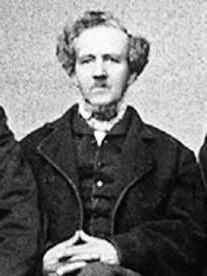
Phineas Howe Young was a prominent early convert in the Latter Day Saint movement and was later a Mormon pioneer and a missionary for The Church of Jesus Christ of Latter-day Saints. Phineas Young was an older brother of Brigham Young, who was the president of the LDS Church and the first governor of the Territory of Utah.
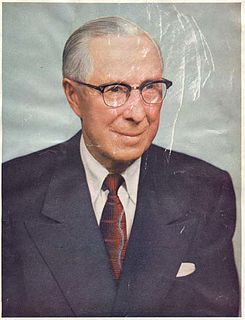
Clifford Earle Young was a general authority of The Church of Jesus Christ of Latter-day Saints from 1941 until his death.

John Parry Sr. was an early Welsh convert to The Church of Jesus Christ of Latter-day Saints and was the first musical conductor of the Mormon Tabernacle Choir.

John Jasper McClellan, Jr. served as the chief organist of the organ in the Salt Lake Tabernacle of The Church of Jesus Christ of Latter-day Saints from 1900 to 1925.

Edward Partridge Kimball was an American organist of the Mormon Tabernacle Choir and a Latter-day Saint hymn writer.
Charles John Thomas was the director of the Mormon Tabernacle Choir, now the Tabernacle Choir at Temple Square, for part of the 1860s, and was involved in several other musical endeavors in early Utah.
Richard Eyring "Rick" Turley Jr. is an American historian and genealogist, and an Assistant Church Historian of The Church of Jesus Christ of Latter-day Saints. On April 26, 2016, the church announced that he would succeed Michael Otterson as the managing director of the church's Public Affairs Department, effective September 1, 2016.

Lorin Farr was a Mormon pioneer and the first mayor of Ogden, Utah.
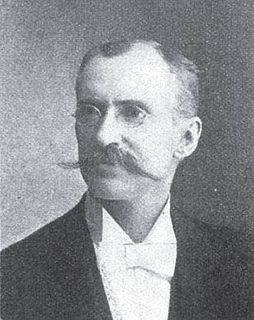
Joseph John Daynes was the first organist at the Salt Lake Tabernacle and for the Mormon Tabernacle Choir. Daynes was born in Norwich, England, to John Daynes and Eliza Miller. The Daynes family later joined The Church of Jesus Christ of Latter-day Saints and then immigrated to Utah Territory in 1862.

Harvey H. Cluff (1836–1916) was a business, civic and educational leader in late-19th-century Provo, Utah.

The Provo Tabernacle served as a tabernacle of The Church of Jesus Christ of Latter-day Saints from 1898 to 2010 in downtown Provo, Utah, United States. It is a historic icon of Provo and has been home to many religious and cultural events. All but the outer walls of the building were destroyed by fire in December 2010. The LDS Church preserved the remaining outer walls and built a new foundation and interior as part of the Provo City Center Temple, completed in 2016.

The Provo City Center Temple is a temple of The Church of Jesus Christ of Latter-day Saints on the same site as the former Provo Tabernacle in Provo, Utah. Completed in 2016, the temple utilizes much of the external shell of the tabernacle, all that remained of the original building after a fire in December 2010.
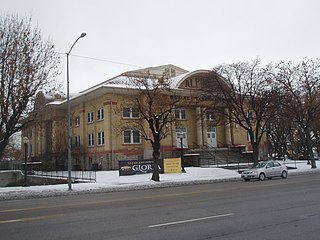
The Alpine Stake Tabernacle or Alpine Tabernacle, located at 110 East Main Street (US‑89) in American Fork, Utah, United States, functions as a meeting place for large gatherings of members of The Church of Jesus Christ of Latter-day Saints in northern Utah County for worship services. The building is part of the American Fork Historic District listed on the National Register of Historic Places.





















